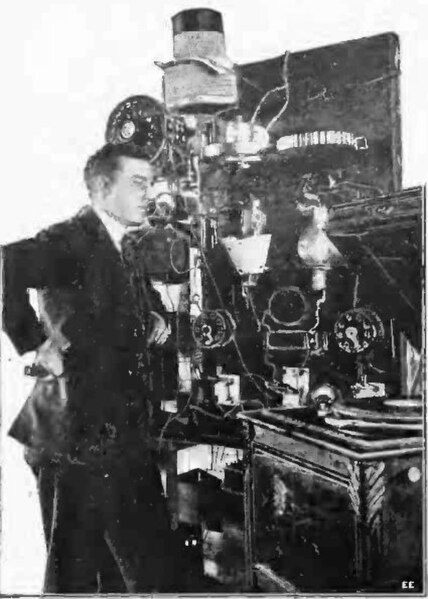Low frequency (LF) is the ITU designation for radio frequencies (RF) in the range of 30–300 kHz. Since its wavelengths range from 10–1 km, respectively, it is also known as the kilometre band or kilometre waves.
An LF radio clock
Low cost LF time signal crystal receiver using ferrite loop antenna.
AM broadcasting is radio broadcasting using amplitude modulation (AM) transmissions. It was the first method developed for making audio radio transmissions, and is still used worldwide, primarily for medium wave transmissions, but also on the longwave and shortwave radio bands.
Lee de Forest used an early vacuum-tube transmitter to broadcast returns for the Hughes-Wilson presidential election returns on November 7, 1916, over 2XG in New York City. Pictured is engineer Charles Logwood.
Nellie Melba making a broadcast over the Marconi Chelmsford Works radio station in England on 15 June 1920
Farmer listening to U.S. government weather and crop reports using a crystal radio in 1923. Public service government time, weather, and farm broadcasts were the first radio "broadcasts".
1938 Zenith Model 12-S vacuum-tube console radio, capable of picking up mediumwave and shortwave AM transmissions. "All Wave" receivers could also pick up the third AM band: longwave (LW).






